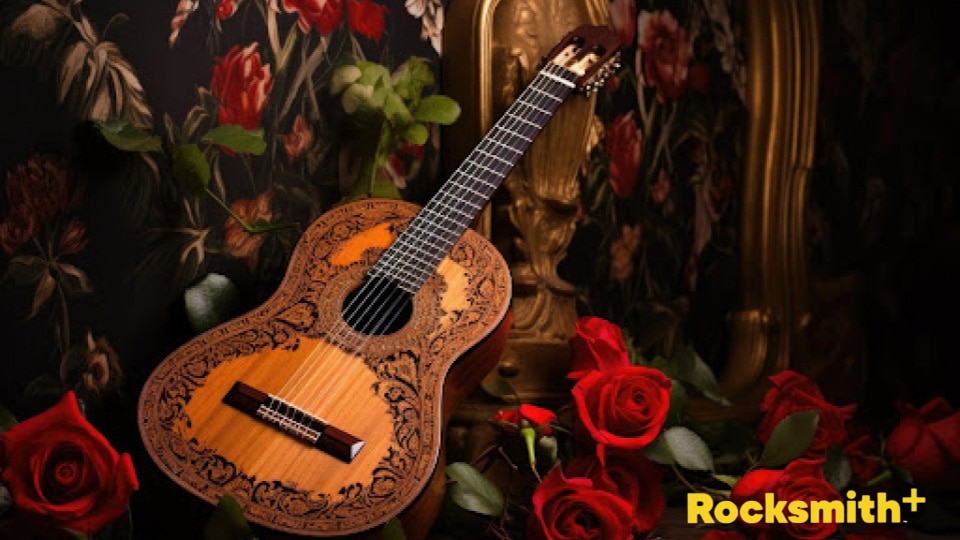Flamenco, with its roots in the heart of Spain, is a vibrant and soulful music genre. This powerful musical tradition has been echoing through the Andalusian hills for centuries, representing an artistic expression that embraces both passion and rhythm.
More than just a style of music, Flamenco is a blend of emotions, techniques, and cultures that unlocks the secrets of captivating musical styles. In this article, we will dive into the unique sounds and techniques of Flamenco guitar playing.
What Is the Flamenco Sound?
Flamenco's historical context is rich and diverse, originating from the fusion of various musical traditions such as Gypsy, Moorish, and Jewish sounds in Southern Spain. It's a genre that has evolved but always maintained its fundamental essence. Musically, Flamenco is characterized by intricate rhythms, compelling melodies, and unique harmonies.
The blend of these elements creates an intense and emotive sound, resonating deeply with performers and listeners. The passion and intensity of Flamenco can be felt in every strum and beat, often telling a story of love, loss, and triumph.
At the core of this genre lies the guitar, an essential part that provides both rhythm and melody, making it a versatile instrument that conveys a wide range of emotions and tones.
What Are Some Key Characteristics of Flamenco Guitar Playing?
Flamenco guitar playing is defined by a combination of unique techniques such as fingerpicking, tapping, and vibrant strumming. These contribute to the dynamic and expressive nature of the music. Alongside these techniques, certain chord progressions define Flamenco's musical structure. Sequences of chords create tension and resolution, offering a rich and engaging experience for the listener.
Tuning methods such as Open G and Standard are also integral, as they contribute to the unique tonal quality of the music, allowing musicians to achieve the distinctive Flamenco sound. Flamenco guitar playing is not just about technique; it's about approach and attitude.
Musicians often play with a deep connection to the music, embracing both tradition and innovation. Together, these elements set the stage for a rich exploration of Flamenco, providing a strong foundation for further understanding and appreciation of this beautiful and intense musical genre.
What Are Some Popular Chords in Flamenco?
![[RS+] Spanish Guitar Chords To Help You Get the Flamenco Sound SEO ARTICLE - popular chords](http://staticctf.ubisoft.com/J3yJr34U2pZ2Ieem48Dwy9uqj5PNUQTn/3micZrotLP0U4xAClwLp4D/a63a27dfc87cd0645c2bae42f223c3c5/flam2.jpg)
Flamenco's allure is tightly bound to its distinctive chord progressions. The following are some of the popular chords and progressions used in Flamenco music:
-
The Andalusian Cadence: A progression involving the chords VIm-V-IV-III, often played with a deep rhythmic feel, provides the signature sound of many Flamenco pieces. For example, in the key of G major, the progression would be Em-D-C-B.
-
Rasgueado Technique: This is a unique strumming style that uses the back of the fingernails, often employed with chords to create a strong and distinctive rhythmic pattern.
-
Open Tuning Chords: Flamenco guitarists commonly use open tunings, such as Open G, which allows for more resonant sounds and unique chord voicings.
-
Minor and Major Chords: Flamenco music prominently features both major and minor chords, providing a rich harmonic palette that supports the emotional depth of the music.
These chords and techniques create the foundation of the Flamenco sound, adding depth and resonance that stirs the soul.
What Are Some Tips and Tricks To Play the Flamenco Style?
Playing Flamenco requires a blend of skill, emotion, and understanding. Here are some tips to guide your journey into Flamenco guitar playing:
-
Mastering the Basics: Understanding basic chords and progressions is essential. Start with simple techniques and gradually build your skills.
-
Emphasizing Rhythm: Flamenco is deeply rhythmic. Practicing with a metronome and focusing on percussive techniques can help in developing this aspect of your playing.
-
Expressing Emotion: Flamenco is not just about technical prowess; it's about conveying emotion. Connecting with the music and allowing it to guide your playing can create a more authentic Flamenco sound.
-
Exploring Different Tunings: Experiment with various tunings like Open G and Standard to find the sounds that resonate with you.
-
Learning from the Masters: Listening to and studying the works of great Flamenco guitarists can offer invaluable insights and inspiration.
How Has Flamenco Influenced Modern Music?
Flamenco's impact goes beyond traditional Spanish music, influencing various modern genres:
-
Pop and Rock: Artists like The Gipsy Kings have blended Flamenco with pop and rock, introducing new audiences to the genre.
-
Jazz Fusion: Flamenco's complex rhythms and harmonies have been embraced by jazz musicians, creating a unique fusion of styles.
-
World Music: Flamenco has been mixed with music from different cultures, like Arabic and Latin music, resulting in a rich tapestry of global sounds.
-
Classical Guitar: Many classical guitarists have incorporated Flamenco techniques and forms into their compositions, reflecting the genre's enduring influence.
The spread of Flamenco into different musical landscapes demonstrates its timeless appeal and adaptability. Its rich traditions and unique sound continue to inspire musicians across genres, making it a vibrant part of the global musical heritage.
How To Get Started With Flamenco Guitar
![[RS+] Spanish Guitar Chords To Help You Get the Flamenco Sound SEO ARTICLE - get started](http://staticctf.ubisoft.com/J3yJr34U2pZ2Ieem48Dwy9uqj5PNUQTn/6Q8sQy4Wp2sfzxUYW47x2M/33bcf9bf5837e16e1e48b07be0cbfb45/flam3.jpg)
If the sounds and techniques of Flamenco have caught your interest, here's a step-by-step guide to getting started:
-
Choose the Right Guitar: While any acoustic guitar can produce Flamenco sounds, consider investing in a specialized Flamenco guitar for the most authentic experience.
-
Understand the Techniques: Focus on learning essential techniques such as rasgueado strumming, fingerpicking, and tapping.
-
Explore Chord Progressions: Start with simple chord progressions like the Andalusian Cadence, then experiment with more complex patterns.
-
Listen and Learn: Immersing yourself in Flamenco music, both traditional and modern, can help you understand the genre's nuances and inspire your playing.
-
Seek Guidance: Whether it's through in-person lessons or online tutorials, guidance from a skilled Flamenco guitarist can accelerate your learning process.
-
Practice Regularly: Like any musical endeavor, consistent practice is key to mastery. Dedicate time each day to hone your skills.
Jam With Flamenco
Flamenco is more than a genre of music; it's an expressive art form that resonates with passion, tradition, and innovation. From its distinctive chords and rhythms to its profound influence on various musical landscapes, Flamenco offers a rich tapestry of sounds that continue to inspire musicians and listeners around the world.
Whether you're a seasoned guitarist or a curious beginner, delving into Flamenco can open new horizons in your musical journey. Embrace the rhythms, explore the chords, and allow the soul-stirring sounds of Flamenco to guide your strings. In doing so, you'll not only be playing music but participating in a vibrant cultural tradition that celebrates life's deepest emotions.
What are you waiting for? Grab your guitar, pull out your tuner, and start practicing Flamenco with Rocksmith+ today.
Sources:
What is flamenco? A complete introduction | Spain Traveller
How Sound Triggers Human Emotion | Stephen Arnold Music









